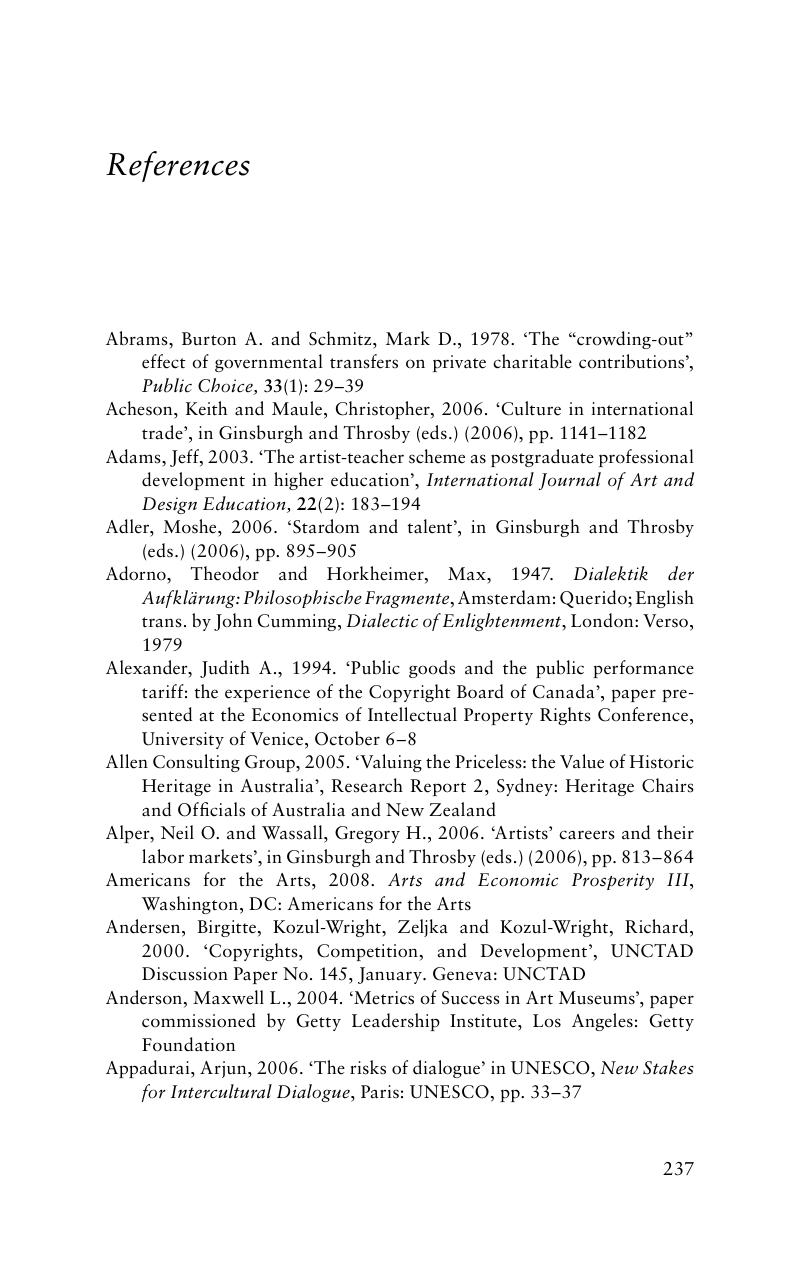Book contents
- Frontmatter
- Contents
- Preface
- Acknowledgments
- Abbreviations
- 1 Introduction
- 2 The scope of cultural policy
- 3 The policy process
- 4 Arts policy
- 5 Cultural industries
- 6 Cultural heritage
- 7 Culture in urban and regional development
- 8 Tourism
- 9 Culture in the international economy
- 10 Cultural diversity
- 11 Arts education
- 12 Culture in economic development
- 13 Intellectual property
- 14 Cultural statistics
- 15 Conclusions
- References
- Name index
- Subject index
- References
References
Published online by Cambridge University Press: 05 June 2012
- Frontmatter
- Contents
- Preface
- Acknowledgments
- Abbreviations
- 1 Introduction
- 2 The scope of cultural policy
- 3 The policy process
- 4 Arts policy
- 5 Cultural industries
- 6 Cultural heritage
- 7 Culture in urban and regional development
- 8 Tourism
- 9 Culture in the international economy
- 10 Cultural diversity
- 11 Arts education
- 12 Culture in economic development
- 13 Intellectual property
- 14 Cultural statistics
- 15 Conclusions
- References
- Name index
- Subject index
- References
Summary

- Type
- Chapter
- Information
- The Economics of Cultural Policy , pp. 237 - 259Publisher: Cambridge University PressPrint publication year: 2010



